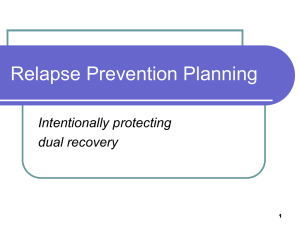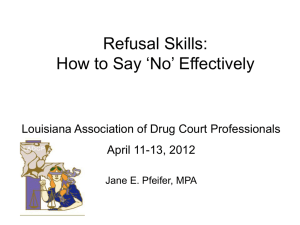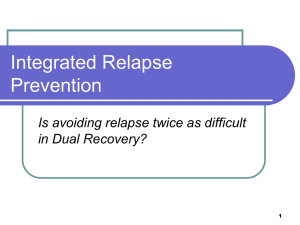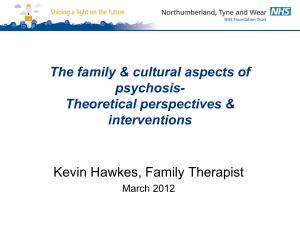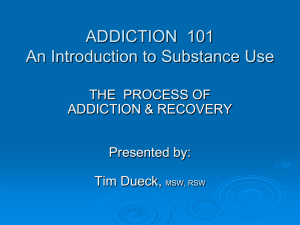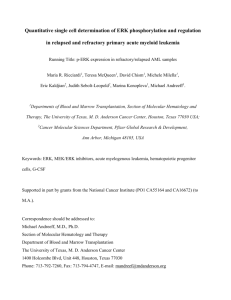Clonal evolution in relapsed NPM1
advertisement
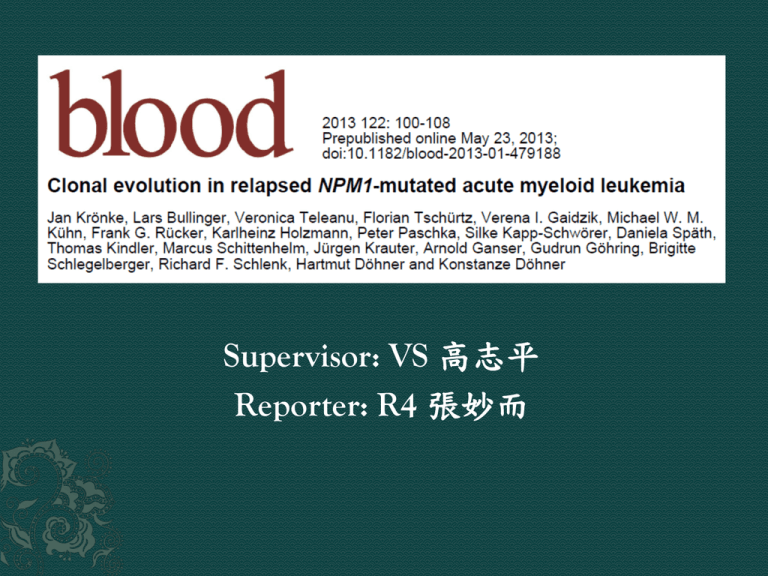
Supervisor: VS 高志平 Reporter: R4 張妙而 Mutations in nucleophosmin 1 (NPM1) gene, one of the most common gene mutations (25%-30%) in AML NPM1mut co-occurs with FLT3, DNMT3A, IDH1, IDH2, and NRAS, not in a random order, instead early and late events A high proportion of NPM1mut AML patients achieve CR with intensive chemotherapy 50% of these patients have relapse during the first 3 years after diagnosis, in particular with concurrent FLT3-ITDs gene NPM1mut, founder event in the pathogenesis of AML, based on stable over time and maintained at relapse, even after a long latency Loss of NPM1mut in 10% of relapsed patients, accompanied by chromosomal and molecular changes Clonal evolution is a hallmark of cancer, highly affected by cytotoxic therapy, selecting resistant clones, reoccurrence of the disease To assess clonal evolution in “AML with NPM1mut,” the author analyzed paired leukemia samples at diagnosis and relapse from 53 patients by highresolution SNP-array profiling and mutation analysis of 10 AML-associated genes SNP: single-nucleotide polymorphism 53 adult AML patients (24-66 y/o) CNA: copy number alterations, UPD: uniparental disomies 2/53 11/53 6/53 6/53 17/53 Mean number of abberations 0.28 per case/diagnosis to 1.06 per case/relapse (paired Student t test, P=0.002) The same Del(9q) lost N=3, both N=1, diagnosis only N=7, relapse only Stability = mutations persisted in relapse/all mutations in diagnosis Acquired at relapse = new mutations in relapse/ mutations in diagnosis CIR=cumulative incidence of relapse The median time interval between achievement of CR and relapse in these 5 AML cases was 33.7 months (range, 5.0-110.5 months) and thus significantly longer than in the 48 patients maintaining the NPM1 mutation at relapse (median, 8.6 months; range, 1.3-57.4; P=0 .03) Additional aberration Lost aberration Newly acquired gene High-resolution SNP-array profiling of 53 relapsed NPM1mut AML patients 0.28 aberration/case at diagnosis 1.06 aberration/case at relapse A higher genetic complexity at relapse is consistent with previous by chromosomal banding analysis Most of aberrations found at relapse, associated with high-risk AML, part explain the poor outcome of relapsed AML No evidence for t-AML that derived from a genetically unrelated hematopoietic clone Primary leukemia and relapse, genetically related and derive directly from the dominant leukemic clone or from a common ancestral clone Ding L, Ley TJ, Larson DE, et al. Clonal evolution in relapsed acute myeloid leukaemia revealed by whole-genome sequencing. Nature. 2012; 481(7382):506-510 Gain mutations Survive and expand DNA-damaging chemotherapy causes secondary genetic changes in persisting (pre-)leukemic clones The specific alterations exclusively at relapse, such as 27/del(7q) and derivative chromosome (12;17)(q10;q10), are frequent in previously treated with chemotherapy A marked increase in the number of a specific type of mutation (transversions) in relapsed AML compared with de novo AML In conclusion, although NPM1mut is generally considered a primary event in NPM1mut AML, the data of this study suggest that mutations in DNMT3A can precede NPM1 mutations. Persisting subclones or preleukemic HSCs acquire new secondary aberrations rather than being genetically unrelated t-AML To achieve long-term leukemia-free survival, future therapies in AML need to eradicate all (pre-)leukemic clones present at diagnosis that persist during therapy and contribute to relapse
